Exploring the art of cake decorating for Saint Vincentian themes offers a unique opportunity to blend tradition, creativity, and personal style. Whether celebrating a baptism, christening, or other significant occasions, Saint Vincentian cakes are a delightful way to mark special moments. This guide delves into simple yet elegant cake decorating ideas, incorporating traditional symbols and vintage-inspired designs to create memorable treats. From easy-to-follow techniques for beginners to sophisticated tips for more experienced bakers, discover how to transform your cake into a stunning centerpiece that honors the rich heritage of Saint Vincentian traditions. Additionally, learn how to incorporate classic color combinations and timeless designs, making your cake a focal point of any celebration. With insights into seasonal themes, such as birthday and Christmas cakes, this comprehensive resource ensures your dessert stands out while bringing joy and elegance to your gatherings.

Best Ways to Decorate a Cake for a Saint Vincentian Celebration
St. Vincent’s Day is celebrated on February 28th or 29th each year, honoring St. Vincent Ferrer, a Spanish missionary. To mark this occasion, decorating a cake is a thoughtful and creative way to celebrate the holiday. Here are some elegant and festive ideas for decorating a cake for St. Vincent’s Day:
- Theme 1: Religious Symbols Incorporate religious symbols associated with St. Vincent, such as crosses, doves, or images of St. Vincent himself. Use gold, silver, or white icing to create intricate designs that reflect the spiritual significance of the day.
- Theme 2: Traditional Colors Opt for a color palette that reflects the traditional colors of St. Vincent’s Day, which are red and white. Use these colors to paint a backdrop for your cake design or to accentuate key elements of the cake.
- Theme 3: Nature-Inspired Designs Add natural elements like branches, leaves, or flowers to mimic the natural beauty of spring, which is often associated with St. Vincent’s Day. Fresh flowers or edible flower petals can also be used for decoration.
- Theme 4: Historical Motifs Reflect St. Vincent’s historical legacy by incorporating motifs from his life, such as maps of Spain, ships, or missionary symbols. These elements can be created using fondant or sugar paste for a visually striking effect.
- Theme 5: Simple Yet Elegant Keep it simple by using a clean, minimalist design with delicate floral patterns or subtle metallic accents. This approach allows the natural beauty of the cake to shine while still conveying the festive spirit of the occasion.
To execute these ideas, consider the following tools and resources from Tort Decor:
- Cake Decorating 101 Tutorial – Learn the basics of cake decorating techniques that can be applied to any theme.
- Classic Carrot Cake Recipe – A perfect choice for a St. Vincent’s Day celebration, this recipe combines moisture and flavor ideal for decorating.
- Fondant Flower Tutorial – Master the art of creating realistic-looking flowers using fondant, ideal for adding natural touches to your cake.
By combining these decorating ideas with the right tools and resources, you can create a stunning cake that celebrates the spirit of St. Vincent’s Day in style. Whether you prefer a simple design or something more elaborate, the key is to let your creativity shine while staying true to the traditions of the occasion.
How to Decorate a Cake for a Saint Vincentian Celebration
To create a stunning Saint Vincentian-themed cake, follow these organized steps for a festive and meaningful dessert:
- Color Scheme:** Opt for rich green and gold hues, symbolizing St. Vincent’s legacy. These colors evoke tradition and reverence.
- Symbolic Elements:** Incorporate meaningful symbols like books (representing education), candles (symbolizing light and hope), and doves (peace and unity).
- Fondant Techniques:** Use fondant to create intricate designs. Add details like roses, vines, or crosses for cultural significance.
- Edible Decorations:** Enhance the cake with sugar letters spelling “Vincent,” edible glitter for sparkle, and geometric patterns reflecting cultural heritage.
- Multi-Tiered Structure:** Consider a multi-level cake, with each tier representing aspects of St. Vincent’s life and contributions.
Ingredients and Tools
- Ingredients: High-quality buttercream, fondant, edible glitter, sugar letters, and food-safe dyes.
- Tools: Offset spatula, piping bags, fondant cutter, and smoothing tools for a polished look.
Step-by-Step Guide
- Base Layer:** Start with a rich chocolate or vanilla cake base. Smear a thin layer of buttercream between layers for moisture.
- Apply Fondant:** Cover the cake with fondant, ensuring smooth coverage. Use a rolling pin for a seamless finish.
- Add Decorative Elements:** Place symbolic cutouts like books or candles on the sides. Arrange sugar roses around the base.
- Detail with Glitter:** Dust areas with edible glitter for a shimmer effect. Use precision tools for controlled application.
- Final Touches:** Attach sugar letters spelling “Vincent” or “St. V.” for a personalized touch. Add geometric patterns using edible ink.
Additional Tips
- Cultural Integration:** Research historical symbols associated with St. Vincent to ensure authenticity.
- Practice patience:** Fondant work requires attention to detail. Take your time to create precise designs.
- Seek Inspiration:** Look up tutorials on platforms like Wilton or Sugarcraft Academy for advanced techniques.
By following these steps, you can craft a cake that honors St. Vincent while impressing your guests with its beauty and symbolism.
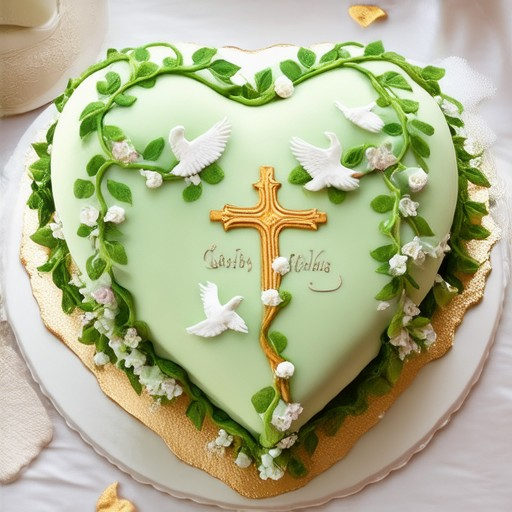
Best Ways to Decorate a Cake for a Saint Vincentian Celebration
St. Vincent’s Day is celebrated on February 28th or 29th each year, honoring St. Vincent Ferrer, a Spanish missionary. To mark this occasion, decorating a cake is a thoughtful and creative way to celebrate the holiday. Here are some elegant and festive ideas for decorating a cake for St. Vincent’s Day:
- Theme 1: Religious Symbols Incorporate religious symbols associated with St. Vincent, such as crosses, doves, or images of St. Vincent himself. Use gold, silver, or white icing to create intricate designs that reflect the spiritual significance of the day.
- Theme 2: Traditional Colors Opt for a color palette that reflects the traditional colors of St. Vincent’s Day, which are red and white. Use these colors to paint a backdrop for your cake design or to accentuate key elements of the cake.
- Theme 3: Nature-Inspired Designs Add natural elements like branches, leaves, or flowers to mimic the natural beauty of spring, which is often associated with St. Vincent’s Day. Fresh flowers or edible flower petals can also be used for decoration.
- Theme 4: Historical Motifs Reflect St. Vincent’s historical legacy by incorporating motifs from his life, such as maps of Spain, ships, or missionary symbols. These elements can be created using fondant or sugar paste for a visually striking effect.
- Theme 5: Simple Yet Elegant Keep it simple by using a clean, minimalist design with delicate floral patterns or subtle metallic accents. This approach allows the natural beauty of the cake to shine while still conveying the festive spirit of the occasion.
To execute these ideas, consider the following tools and resources from Tort Decor:
- Cake Decorating 101 Tutorial – Learn the basics of cake decorating techniques that can be applied to any theme.
- Classic Carrot Cake Recipe – A perfect choice for a St. Vincent’s Day celebration, this recipe combines moisture and flavor ideal for decorating.
- Fondant Flower Tutorial – Master the art of creating realistic-looking flowers using fondant, ideal for adding natural touches to your cake.
By combining these decorating ideas with the right tools and resources, you can create a stunning cake that celebrates the spirit of St. Vincent’s Day in style. Whether you prefer a simple design or something more elaborate, the key is to let your creativity shine while staying true to the traditions of the occasion.

Creative Cake Decoration Ideas for a Saint Vincentian Celebration
Decorating a cake for a Saint Vincentian celebration can be a fun and meaningful way to honor St. Vincent de Paul. Here are some creative ideas to inspire your dessert:
- Religious Theme: Incorporate symbols associated with St. Vincent, such as the cross, doves, or vines. Use edible dyes to create vibrant hues representing faith and spirituality.
- Nature-Inspired Designs: Reflect St. Vincent’s connection to nature by adorning the cake with leaf shapes, floral motifs, or naturalistic patterns using fondant or edible glue.
- Historical or Cultural Elements: Feature imagery from St. Vincent’s life or traditional symbols from his homeland, such as grapes or wheat, to evoke a sense of heritage.
- Colorful and Joyful Themes: Opt for a lively color palette inspired by spring or summer, symbolizing renewal and joy, with shades like lavender, green, and yellow.
- Geometric Patterns: Use cookie cutters shaped like stars, hearts, or crosses to create a modern yet meaningful design.
For added flair, consider:
- Adding small figurines or statues of St. Vincent at the cake’s top.
- Using edible glitter or gold accents to highlight significant details.
- Incorporating fresh flowers or candles as centerpieces alongside the cake.
To execute these ideas, you can use:
- Cake pans in various sizes for multi-tiered designs.
- Fondant or buttercream for smooth coverage and intricate details.
- Edible dyes, gels, and paint for vibrant coloring.
- Cake decorating tools like brushes, smelters, and pipers.
These decorations not only beautify the cake but also celebrate the legacy and values associated with St. Vincent de Paul. Whether you’re hosting a small gathering or a larger event, a specially decorated cake can make the occasion unforgettable!
Best Ways to Incorporate Traditional Symbols into a Saint Vincentian Cake
To celebrate Saint Vincentian traditions, you can creatively incorporate symbolic elements into your cake. Here are some ideas:
- St. Vincent Cross Decoration: Use fondant or sugar paste to create a prominent cross on the cake’s top or side. This symbolizes St. Vincent’s dedication to service and faith.
- Heart Motif: Add a red heart-shaped decoration, either as a fondant cutout or piped with frosting, to represent love and compassion, key values associated with St. Vincent.
- Violet Flowers: Incorporate violet flowers, either real or edible, to symbolize St. Vincent’s connection with violets, a flower often linked to him.
- Feast Day Reference: Include the date “April 27” using fondant or icing, placed prominently on the cake to mark the occasion.
- Elegant Color Scheme: Opt for colors like deep red, white, and gold to reflect St. Vincent’s noble character and the grandeur of the celebration.
- Edible Glitter: Dust the cake with edible glitter for a shimmering effect, evoking the light of hope and renewal.
- Symbolic Layers: Create tiers or layers in the cake, each decorated with crosses, hearts, or violets, to represent different aspects of St. Vincent’s legacy.
These decorations can be combined in various ways to suit your personal style, ensuring a visually stunning and meaningful centerpiece for your Saint Vincentian celebration.
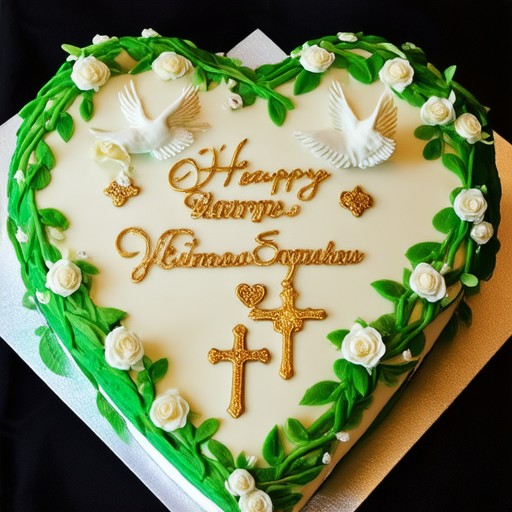
Best Ways to Incorporate Traditional Symbols into a Saint Vincentian Cake
To celebrate Saint Vincentian traditions, you can decorate a cake with meaningful symbols that reflect his life and values. Here are some creative ideas:
- St. Vincent Cross Symbol: Use fondant to create a realistic cross shape on top of the cake. This symbolizes St. Vincent’s dedication to faith and service.
- Heart Shape for Love: Add a red heart made from fondant or icing to represent compassion and love, a key aspect of his legacy.
- Maltese Flag Inspiration: Incorporate the Maltese flag’s colors (green and white) into the cake’s decor, using icing to create a subtle flag design around the base.
- Halo Depiction: Dust the sides of the cake with edible silver powder to create the illusion of a halo, symbolizing his divine connection.
- Symbolic Gestures: Use edible ink to write “Vincent” in a decorative font on the cake, personalizing it with his name and significance.
Design Elements
Layer different colors to represent aspects of St. Vincent’s life, such as gold for divine connection and white for purity. Incorporate vines or wheat for abundance and nature, reflecting his commitment to serving others.
Tools and Ingredients
High-quality fondant, edible dyes, food coloring, and precise cutting tools like cookie cutters are essential. Smooth icing with a spatula ensures decorations stay in place.
Application Tips
Start with the base, then move to the sides and top. Place symbols strategically for cohesion. Consider adding fresh flowers or greens for a natural touch that complements the cake’s theme.
Presentation
Include a note card with a relevant quote from St. Vincent to educate guests and tie the theme together. Balance the design to avoid overcrowding, focusing on key symbols that convey the celebration’s essence.
By combining symbolic elements with artistic cake decorating, you can create a meaningful and visually stunning centerpiece that honors St. Vincent’s legacy.

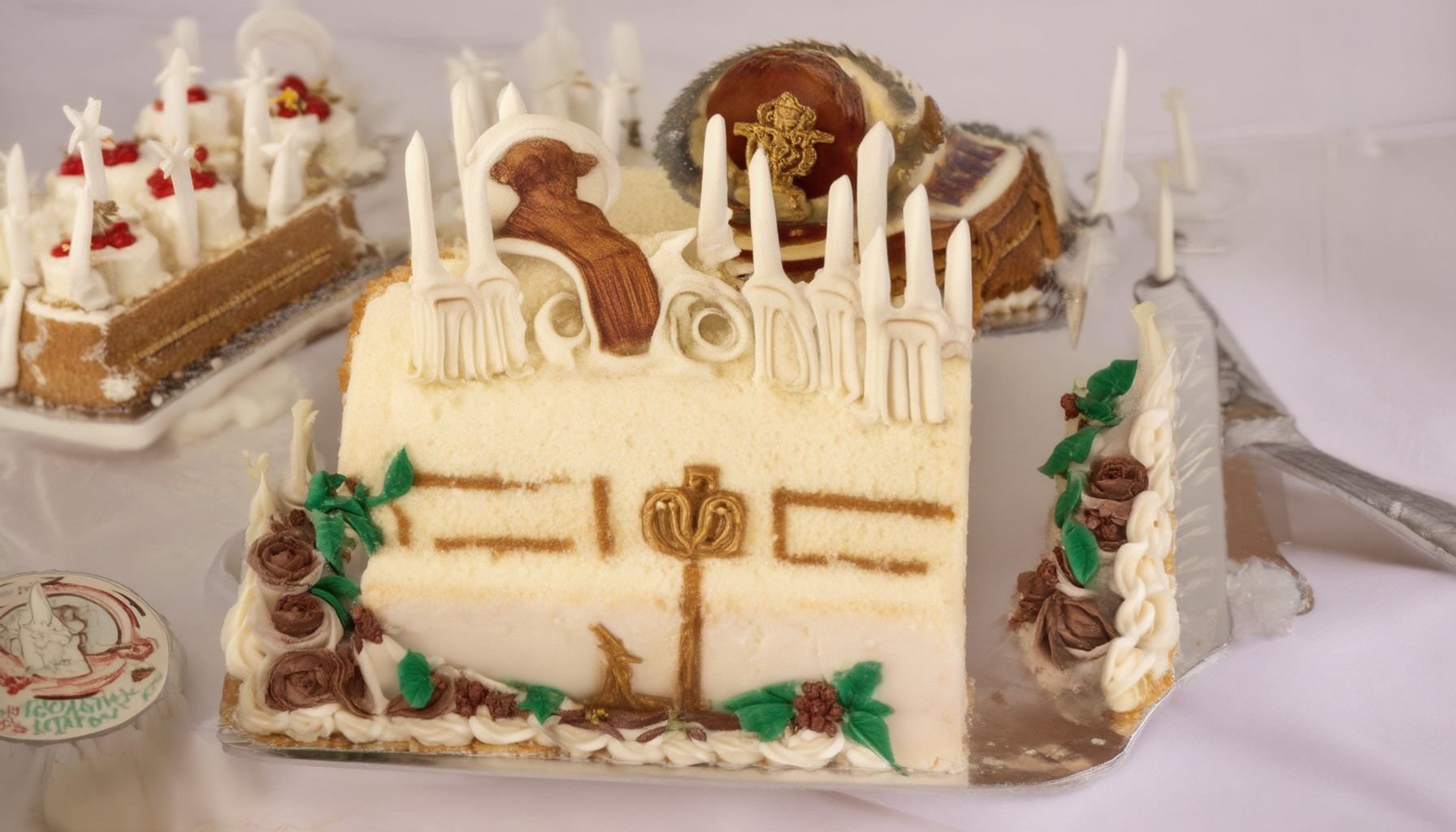
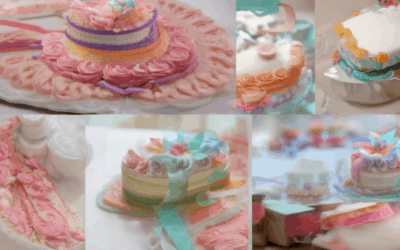
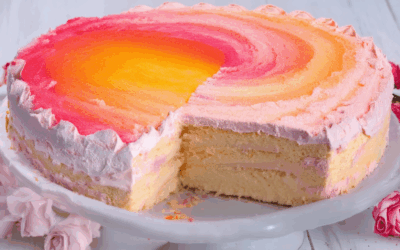

0 Comments